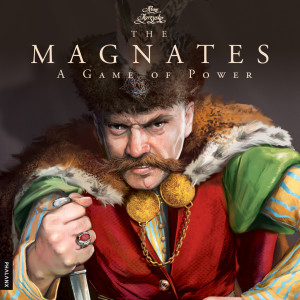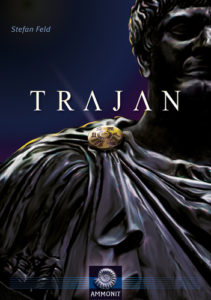- Learning time
- 30 minutes
- First play time
- minutes
Pandemic: Fall of Rome
Designed by: Matt Leacock,Paolo Mori
In Pandemic: Fall of Rome the players work together as late-era Romans, trying to stop the collapse of the empire under the rising tide of invading barbarian hordes.
The board shows the empire – Europe – with five spots on it where the barbarians will emerge from, which are seeded with coloured cubes to represent the coming invaders. Players take on a specific role – everyone has a special ability – and on their turn, simply take four actions, some of which cost you city cards – each of which have a colour matching one of the invading bands, and a city location. The actions include movement – from city to city or port to port, battling (a simple dice roll), fortifying spaces by building forts, recruiting legionaries at the forts (which are then used in battle/defence), plotting (where players in the same city may hand each other cards) and most importantly forging an alliance with an invading band.
Why hand each other cards? Well, there are five such bands and only by forging an alliance with all five can you win the game. How you do this is simple, at least in theory: you discard a certain amount of cards of the matching band’s colour. The allied band will continue to invade, but they can now be converted into legionaries to fight on your behalf.
At the end of your turn, you pick up more player cards, and Barbarian cards are flipped over to reveal which band is invading, and where they’ll be causing trouble. Invasions at the start of the game don’t cause too much trouble – you simply add a cube to the board following some simple placement rules. But as the game continues it gets more and more crowded, and if a fourth cube of the same colour is added to any city, that city is sacked: not only does your empire deteriorate, but any adjacent cities get hit by extra invaders as well – which may cause chain sackings: not good news for you.
Additional to this war of attrition are Revolt cards hidden in the city deck: when one of these is revealed, a new city is hit by three invaders and all the discarded invasion cards are shuffled and put back on top of the invasion deck – meaning that all the cities that are already dealing with invaders are going to get hit again!
The game ends either when all alliances are forged (and/or un-allied invaders are knocked off the map) and you win, or when the decline track reaches the end, signifying the empire’s collapse – you lose.
The guru's verdict
-
Take That!
Take That!
None from each other - plenty from the Visigoths.
-
Fidget Factor!
Fidget Factor!
Although you're waiting for your turn at times, in theory all players are always involved as success is best achieved by discussion and making plans.
-
Brain Burn!
Brain Burn!
The rules are actually pretty light, although the 12 page rulebook gives the impression of a heavier game. Implementing them is the challenge here, as each card reveal
-
Again Again!
Again Again!
The card turn ensures a degree of unpredictability here, although the story of the game remains the same. But it plays nice and fast and will often be over - albeit not always triumphantly - in under an hour.














Sam says
Fall of Rome is one of many games that took the highly-successful game of Pandemic and rethemed it using the same basic card-flipping principles: work together against the clock to save the day. If you love (or haven't played) Pandemic, there is much to enjoy here: gameplay is simple but has an integrated tension of time-running-out, as well as offering 'easy' 'normal' or 'hard' settings, and a variant included in the basic rules. On the other hand (if you've played Pandemic) if what you are after is variety, then it could be argued that Fall of Rome is very similar to original flavour pandemic, and therefore your money could be spent in better ways. I enjoyed my plays of Fall of Rome though; it certainly stands up on its own and if you're new to the Pandemic games I'd recommend it with equal enthusiasm as the original.